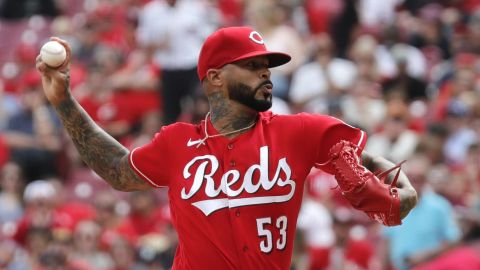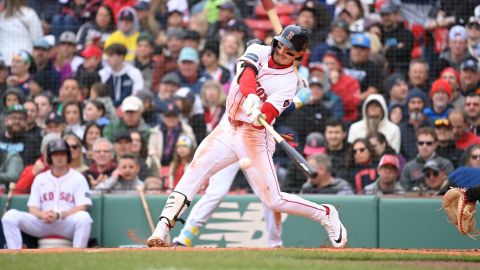Red Sox fans were thrilled to see the Josh Beckett of old on Sunday night. As impressive as Beckett’s final line was in a 4-0 Sox win over the Yankees, it may have been Beckett’s radar gun readings that can give Boston fans the most optimism.
On Sunday night, Beckett looked like the pitcher that led the Red Sox to mortgage part of their future for prior to the 2006 season, when they shipped Hanley Ramirez and Anibal Sanchez (who got shelled over the weekend, by the way) to Florida for Beckett and Mike Lowell. The veteran right-hander struck out 10 Yankees, a team that has pounded him as of late, on his way to eight shutout innings at Fenway Park.
The biggest reason for Beckett’s blast to the past, may have been his ability to not only command his fastball, but to do so with greater velocity.
Beckett is still a power pitcher, and he still relies on his fastball when he needs to get outs. The thing is, when his fastball is not touching the mid-90s as it was on Sunday night, it’s going to be tough for him to get by.
It was a different story on Sunday night, though. Beckett was rearing back and firing, and it seemed to make a world of difference. He was a different pitcher than the one we saw have a forgettable start on April 5 in Cleveland, and a lot of it seemingly stems from the fastball.
Consider these fastball stats real quick (velocity averages courtesy of Brooks Baseball’s pitchFX tool)
Cleveland start
- Beckett threw 52 fastballs.
- None of those fastballs registered at more than 93 mph
- Average four-seam fastball velocity: 92.22 mph
- Average two-seam fastball velocity: 91.91 mph
- Final line: 5 IP, 5 H, 3 ER, 4 BB, 4 K
New York start
- Beckett threw 40 fastballs
- Of those 40 fastballs, 24 of them registered at 94 mph
- Average four-seam fastball: 93.58 mph
- Average two-seam fastball: 93.35 mph
- Final line: 8 IP, 2 H, 0 ER, 1 BB, 10 K
Now, obviously, it’s a small sample size. And more obviously it means nothing if Beckett takes the mound in his next start and goes back to consistently working at 91 or 92 like he did in Cleveland. However, if he is able to sustain the jump in velocity, it opens some doors for him.
It may not seem like much, but a 2-mph jump when it comes to a major league fastball, is pretty substantial. If Beckett is working at a higher velocity, it makes his secondary stuff that much better.
When he’s throwing harder, it makes his changeup that much better. Beckett featured a pretty nasty changeup against the Indians, but being able to effectively establish the fastball like he did on Sunday night will make his off-speed stuff that much better when he’s able to contrast his speeds to a larger degree.
A more dominant fastball will only make Beckett’s curveball, a pitch that can be absolutely devastating, even more baffling. When Beckett is working in the mid-90s, he’s able to elevate in the zone, as we saw on Sunday night. When the velocity is down, it’s a lot tougher to get away with working up in the zone against major league hitters. There is practically no room for error. So what does being able to work up in the zone have to do with his curveball? If Beckett is able to climb the ladder from time-to-time, it makes the curveball that much more deceptive. It allows him to change the hitter’s eye level, thus making his already sharp 12-6 curve that much better.
Beckett’s curveball will also be helped by the inclusion of a strong two-seam fastball which he also featured on Sunday night. With the two-seamer working, Beckett is able to get back more of the plate. We saw it early on Sunday night when Beckett got Mark Teixeira looking on a two-seamer that ran over the inside corner for a strikeout. If lefties aren’t able to sit on fastballs and breaking pitches away (especially at Fenway with the Green Monster looming in left), it allows Beckett to work on the outer half, particularly with his curveball and cut fastball.
By establishing his command with the pitch on Sunday night, Beckett was able to work in his secondary stuff the second, third and fourth time threw the lineup. He established the fastball, dialing it up during the first time through, and worked off of it all night. It was textbook pitching.
But, it all comes back to the fastball.
None of this is rocket science (although Beckett probably knows a little more about that these days), but it is certainly worth noting.
Sunday’s radar gun readings have to be encouraging for Beckett and the Red Sox. If he can continue to light the gun up like he did on Sunday night, then Red Sox fans might be able to expect more stat lines like they saw on Sunday night as well.




